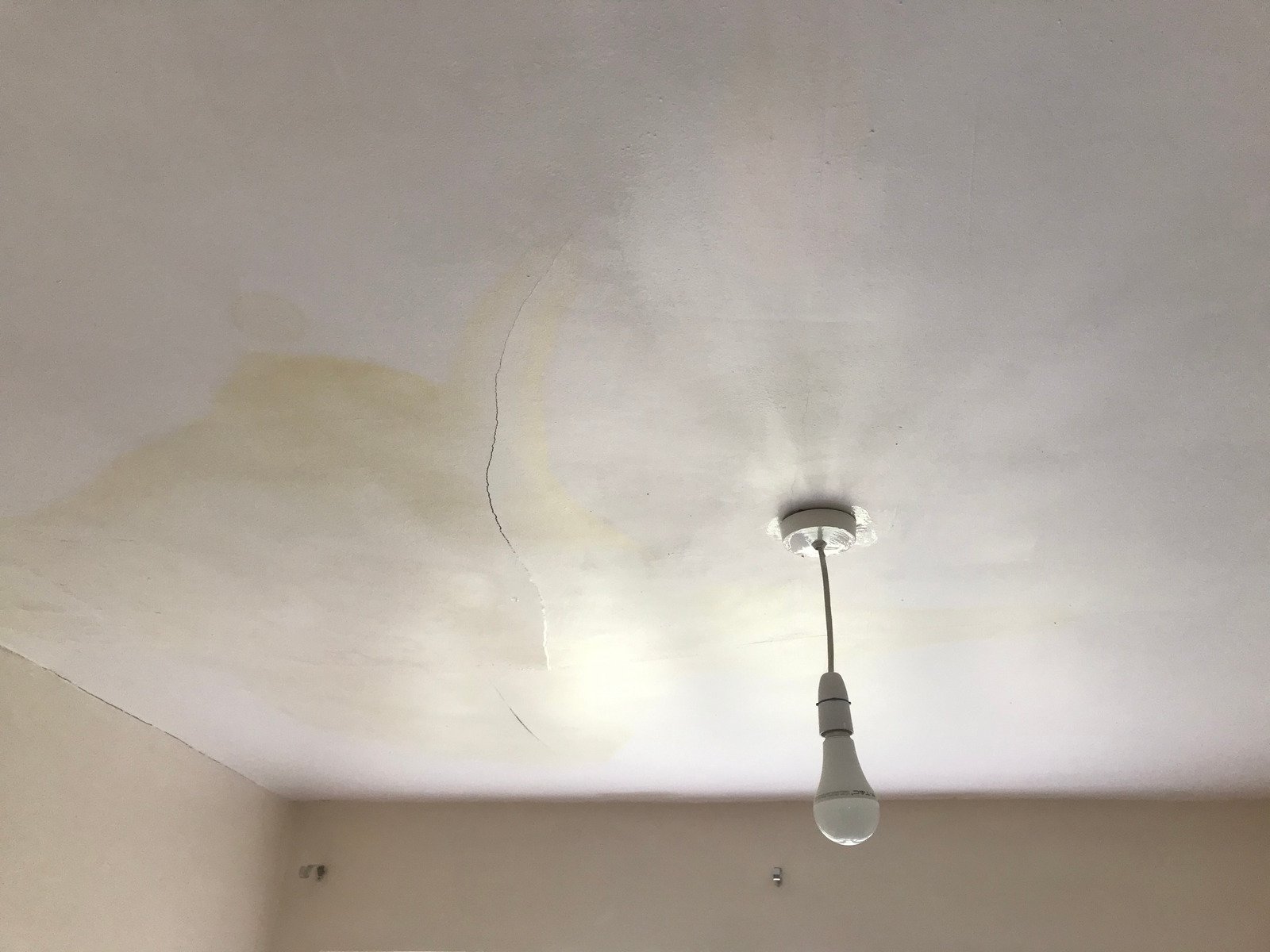If you’ve noticed that cracks in your ceiling keep coming back, it’s important to understand what’s really causing them. Many homeowners try quick fixes, but these usually just hide bigger problems. Whether it’s down to structural stress, moisture, or poor installation, finding the true cause is the key to solving it properly. A professional can help figure out what’s really going on — and they’ve got the tools and knowledge to fix it for good.
What might they discover about your home?
Key Takeaways
-
Recurring ceiling cracks are often due to deeper structural issues or past repairs that didn’t fix the real problem.
-
Moisture from leaks or humidity can make cracks worse and needs proper assessment to be resolved.
-
DIY repairs may only hide the issue temporarily, not stop it from coming back.
-
Professionals look deeper to find and fix the actual cause, offering long-lasting solutions.
-
Regular checks and timely maintenance help stop new cracks from forming and keep your ceiling in good shape.
Understanding the Types of Ceiling Cracks
Not all ceiling cracks are the same, and each type can mean something different.
You might spot hairline cracks, linear cracks, or bulging areas. Hairline cracks are usually caused by small settling movements and aren’t often serious. Linear cracks that run straight across the ceiling could mean structural stress. Bulging cracks — where the ceiling looks raised or puffy — might be a sign of moisture problems or bigger structural issues.
Taking note of the size, shape, and location of cracks can help you understand what’s going on. Watching how they change over time is also useful when trying to figure out the cause.
Common Causes of Ceiling Cracks
Now that you know the types, it’s easier to think about why the cracks are happening. The most common reasons are structural movement, moisture, and temperature changes.
Cracks can appear when materials expand and shrink due to heat or cold. Poorly installed drywall or weak framing can also lead to cracking.
If you’ve tried to patch up cracks without fixing the cause, they’ll likely come back. Older homes may also see more cracks as materials naturally wear out.
Understanding what’s behind the cracks is the first step towards fixing them properly. A professional can help you get to the bottom of the problem so that it doesn’t keep returning.
The Role of House Settling
As your home ages, it naturally settles into the ground — but this can create problems.
Natural Ground Movement
The ground beneath your house is always shifting, especially in areas with soil that changes with moisture. For example, clay soils swell when wet and shrink when dry. This can lead to uneven movement under your foundation, which in turn puts pressure on your ceilings and walls.
Even if it happens slowly, this shifting can lead to ongoing issues unless it’s properly managed. Understanding how the ground moves helps professionals spot the real causes of your home’s structural problems.
Foundation Settlement Effects
When the ground shifts too much, it can cause your home’s foundation to settle unevenly — and this can be a big deal.
You might notice doors that won’t close properly, slanted floors, or cracks appearing around your home. If ignored, these problems can get worse and more expensive to fix.
Professionals can use techniques like underpinning or installing piers to stabilise your home’s foundation. It’s best to deal with settlement issues early, before they turn into major repairs.
Effects of Moisture and Humidity
Moisture is one of the biggest enemies of your ceiling. When there’s too much humidity, building materials start to expand and contract.
Over time, this movement causes stress that leads to cracks. Poor ventilation, roof leaks, or plumbing problems make things worse.
Using a dehumidifier or improving airflow can help stop moisture from building up. Keeping these problems under control helps prevent future cracks from forming.
Structural Issues You Shouldn’t Ignore
Some people brush off ceiling cracks as “just cosmetic,” but they can be a sign of something more serious.
Cracks linked to foundation problems can lead to real safety issues. Keep an eye out for uneven floors, sticking doors, or gaps near windows. These all suggest there might be a deeper structural issue.
If you spot any of these signs, don’t wait. Get a professional in to check your home’s structure and carry out the right repairs. Acting early could save you money and stress in the future.
The Importance of Proper Home Insulation
Insulation does more than just keep your home warm in winter — it also helps protect your ceiling.
With good insulation, your home stays a steady temperature and has better moisture control. This helps prevent cracks from forming due to expansion and contraction.
Poor insulation means more energy loss, higher bills, and a higher chance of dampness or mould, which can damage your ceiling. Making sure your insulation is installed properly protects your home and saves money in the long run.
DIY Fixes vs. Professional Solutions
When cracks appear, you might be tempted to grab some filler and sort it yourself. But it’s important to know when to call in a pro.
Temporary DIY Solutions
Quick fixes like spackling or drywall tape can make your ceiling look better — for a while. But they don’t fix the reason the crack appeared in the first place.
These methods may work short-term, but the crack often comes back. If you want it gone for good, you need to deal with the root cause, and that means getting help from someone who knows what to look for.
Long-term Professional Repair
Professionals do more than just patch things up. They assess the entire situation — checking for movement, moisture, or other issues — and then carry out repairs that last.
They might use special fillers, mesh tape, or even replace parts of the ceiling. Their aim is to stop the problem coming back, not just hide it.
It might cost a bit more upfront, but it saves you from doing the same repairs over and over again.
Identifying Warning Signs of Serious Damage
So, how do you know if a crack is just a crack — or something more serious?
If it’s thin and not changing, it’s probably cosmetic. But wide, jagged, or fast-growing cracks are a red flag.
Also look for other warning signs like sloping walls, doors not shutting properly, or mould stains. These could mean you’ve got a serious issue with your ceiling or structure — and it’s time to call in the pros.
How Professionals Assess and Repair Cracks
Experts take a step-by-step approach to ceiling cracks.
First, they look at the crack’s size, location, and shape. This helps them figure out what caused it — was it moisture? Movement? Age?
Then they choose the best way to fix it. That might mean filling the crack with epoxy, using mesh tape, or even putting in new drywall.
They make sure the repair is strong, not just neat, so the problem won’t return.
Preventive Measures to Avoid Future Cracks
The best way to avoid ceiling cracks is to stay ahead of them.
-
Check your ceiling and attic regularly for any signs of movement or damp.
-
Keep your insulation and ventilation in good shape.
-
Fix leaks and keep an eye on your foundation.
-
Use flexible sealants where needed to let materials move without cracking.
-
Book a yearly inspection with a professional to catch any problems early.
A little upkeep goes a long way in keeping your ceiling crack-free.
Frequently Asked Questions
How can I tell if a crack is serious?
If the crack is wider than 6mm (a quarter inch) or keeps growing, it might be structural. In that case, get a professional to take a look.
Do all ceiling cracks need a professional repair?
Not always. Small, hairline cracks might be fixed yourself. But bigger or growing cracks should be checked by an expert.
Can ceiling cracks affect home value?
Yes. If a buyer sees ceiling cracks, they may worry there’s a structural problem — and that can lower your home’s value.
What materials work best for ceiling crack repair?
For small cracks, joint compound is fine. For bigger ones, use patching tape, plaster, or even new drywall — depending on what’s needed.
How often should I inspect my ceilings for cracks?
At least twice a year. Regular checks help catch problems early before they turn into something bigger.
Conclusion
In short, ceiling cracks that keep coming back are often a sign of a deeper issue. DIY repairs might help the look, but they won’t stop the cracks from returning unless the real cause is dealt with.
From natural settling to dampness and poor insulation, many things can be behind the damage. A qualified professional can find the problem and fix it properly — saving you time, money, and worry down the line.




